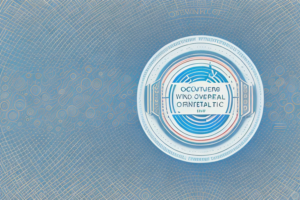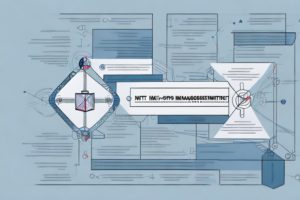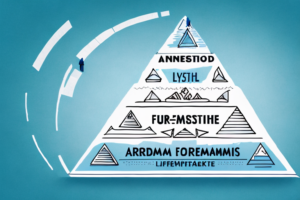What is contingency planning in RMF?

A layered security system with multiple layers of protection
Contingency planning is a critical component of risk management framework (RMF) that involves identifying potential threats and developing an action plan to mitigate the impact of any disruptions that may occur. In today’s business environment, organizations need to be prepared for any unforeseen events that may disrupt their operations, whether it is a natural disaster, cyberattack, or any other type of crisis.
Understanding the Importance of Contingency Planning in RMF
Contingency planning in RMF is essential because it helps organizations to prepare for the worst-case scenarios and minimize the impact of any disruptions that may occur. By developing a comprehensive action plan, organizations can quickly respond to any potential threats and implement measures to limit damage, minimize downtime, and recover quickly.
Through a well-designed contingency plan, companies can also ensure compliance with regulatory standards, reduce financial losses, and protect their reputation in the market.
Moreover, contingency planning also helps organizations to identify potential risks and vulnerabilities in their systems and processes. By conducting a thorough risk assessment, companies can identify areas that require improvement and implement measures to mitigate risks before they turn into major issues. This proactive approach not only helps organizations to avoid potential disruptions but also enhances their overall security posture.
The Basics of Risk Management Framework (RMF)
Risk Management Framework (RMF) is a structured process that organizations use to identify, assess, and mitigate risks. RMF is critical in ensuring that organizations can effectively manage risks and comply with regulatory requirements. RMF involves six essential steps: categorization, selection, implementation, assessment, authorization, and monitoring.
The first step in RMF is categorization, where an organization identifies and categorizes its information systems and assets based on their level of importance and impact on the organization’s mission and business operations. This step helps organizations prioritize their risk management efforts and allocate resources effectively.
The second step is selection, where an organization selects the appropriate security controls to protect its information systems and assets based on the identified risks. This step involves evaluating the effectiveness of the security controls and selecting the ones that provide the best protection while minimizing the impact on the organization’s mission and business operations.
The 6 Steps of the RMF Process
Categorization
The first step of the RMF process is categorization. This step involves identifying and categorizing assets and information systems based on their level of criticality and potential impact on the organization.
Selection
Once assets and information systems are identified, the next step is to select appropriate security controls to mitigate identified risks.
Implementation
This step involves the deployment of selected security controls and the establishment of measures to ensure ongoing compliance with regulatory standards.
Assessment
This step involves ongoing monitoring and streamlining of security controls to ensure their effectiveness against identified risks.
Authorization
The authorization step involves reviewing and approving the security controls, ensuring compliance with regulatory requirements, and approving the information system for use.
Monitoring
The final step in the RMF process involves ongoing monitoring and review of the security controls to ensure ongoing compliance with regulatory requirements and to identify new risks that may emerge over time.
Continuous Improvement
It is important to note that the RMF process is not a one-time event, but rather a continuous cycle of improvement. As new threats and vulnerabilities emerge, the security controls must be updated and adjusted accordingly. Additionally, regular assessments and audits should be conducted to ensure that the security controls remain effective and compliant with regulatory standards.
Identifying Potential Risks and Threats in RMF
Identifying potential threats is a crucial step in contingency planning in RMF. Risk identification involves a systematic process that examines potential threats to the organization’s assets, including natural disasters, cyberattacks, and other types of disruptions. Once risks are identified, organizations can develop responsive and preemptive measures to mitigate them.
One important aspect of identifying potential risks and threats in RMF is to consider the impact they may have on the organization’s operations. This includes assessing the potential financial, reputational, and legal consequences of a risk materializing. By understanding the potential impact of a risk, organizations can prioritize their risk management efforts and allocate resources accordingly.
Another key consideration when identifying potential risks and threats in RMF is to involve stakeholders from across the organization. This includes individuals from different departments, as well as external partners and vendors. By involving a diverse group of stakeholders in the risk identification process, organizations can gain a more comprehensive understanding of potential risks and develop more effective risk management strategies.
Why Contingency Planning is Critical for Risk Mitigation in RMF
Contingency planning is essential for mitigating risk in RMF because it ensures that organizations are prepared to respond to unforeseen events when they occur. Contingency planning involves developing strategies and measures to limit damage, minimize downtime, and recover quickly. In addition, contingency planning promotes a culture of continuous improvement and ongoing review of security controls to ensure their effectiveness in mitigating risks.
One of the key benefits of contingency planning is that it helps organizations to identify potential risks and vulnerabilities before they occur. By conducting a thorough risk assessment and developing a contingency plan, organizations can proactively address potential threats and minimize their impact on operations. This can help to prevent costly downtime, data loss, and reputational damage.
Another important aspect of contingency planning is the need for regular testing and updating of the plan. This ensures that the plan remains relevant and effective in the face of changing threats and evolving technologies. By regularly reviewing and updating the plan, organizations can stay ahead of potential risks and ensure that they are always prepared to respond to any unforeseen events that may arise.
Types of Contingencies: Preemptive, Responsive, and Recovery
There are three types of contingencies in RMF: preemptive, responsive, and recovery. Preemptive contingencies involve measures taken to prevent potential threats before they occur. Responsive contingencies involve immediate measures implemented during an emergency situation. Recovery contingencies involve measures taken after the emergency situation is over to ensure business continuity and minimize the impact of the disruption.
How to Develop Effective Contingency Plans for Your Organization
The process of developing an effective contingency plan involves several critical steps. First, organizations should identify potential threats and risks to their operations. Next, they should develop a comprehensive action plan that includes strategies for minimizing potential damage, ensuring business continuity, and recovering from the disruption.
Once the contingency plan is developed, it should be tested and revised regularly to ensure its effectiveness in mitigating potential risks. Organizations should also invest in regular training to ensure their employees are aware of the contingency plan and their roles in implementing it during an emergency situation.
Testing and Evaluating Your Contingency Plans in RMF
Testing and evaluating contingency plans are critical components of RMF that ensure their effectiveness in mitigating potential risks. Regular testing and evaluation are essential to identify any potential weaknesses in the contingency plan and make necessary improvements to ensure its effectiveness in mitigating risks.
Best Practices for Maintaining Contingency Plans in RMF
Effective maintenance of contingency plans involves several best practices, including ongoing review and revision of the plan, continuous monitoring of emerging risks, training of employees, and ongoing testing and evaluation. These best practices help to ensure that the contingency plan remains effective in mitigating potential risks and is up-to-date with emerging threats.
Examples of Successful Contingency Planning in Real-World Scenarios
Several real-world examples demonstrate the importance of effective contingency planning in RMF. One such example is the response to Hurricane Katrina in 2005, where organizations successfully implemented their contingency plans to limit damage and ensure business continuity. Other examples include the response to the global financial crisis in 2008 and the COVID-19 pandemic in 2020.
Ensuring Compliance with Regulatory Standards through Contingency Planning in RMF
In today’s business environment, regulatory compliance is critical for ensuring business continuity and protecting the organization’s reputation. Effective contingency planning in RMF involves ensuring compliance with regulatory standards, including HIPAA, NIST, and others. Compliance with regulatory standards in contingency planning involves developing measures to protect sensitive data, securing critical systems, and ensuring business continuity in the event of a disruption.
Common Pitfalls to Avoid When Developing Contingency Plans in RMF
Effective contingency planning in RMF involves avoiding common pitfalls that can compromise the plan’s effectiveness. These include failure to identify and prioritize potential risks, inadequate testing and evaluation of the contingency plan, lack of buy-in from employees, and failure to allocate adequate resources to implement the plan effectively.
How Technology Can Help Streamline the Contingency Planning Process in RMF
Technology plays a crucial role in streamlining the contingency planning process in RMF. Several software solutions are available that can automate the process of identifying and categorizing assets, assessing risks, developing a comprehensive action plan, and testing and evaluating the contingency plan’s effectiveness.
Technology can also help organizations to ensure ongoing compliance with regulatory requirements, monitor emerging threats, and provide real-time alerts during emergency situations to implement responsive measures promptly.
Conclusion: The Importance of Making Contingency Planning a Priority in Your Risk Management Framework Strategy
Contingency planning is a critical component of RMF that helps organizations to prepare for any potential disruptions to their operations. Effective contingency planning is essential for minimizing potential damage, ensuring business continuity, and protecting the organization’s reputation.
By making contingency planning a priority in their RMF strategy, organizations can ensure ongoing compliance with regulatory requirements, reduce financial losses, and protect sensitive data against emerging threats.



